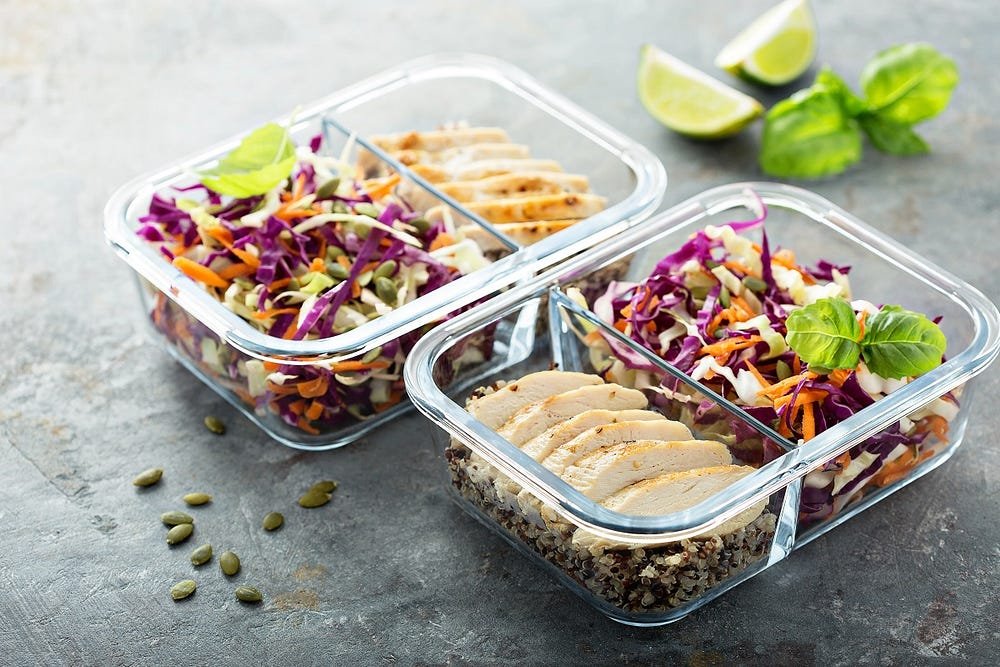If you’re enthusiastic to fully understand the Atkins Diet, get prepared to immerse yourself in a plan that focuses on protein, fats, and slimming down by burning fat for energy.
This diet could be your ticket to a fresh perspective on weight loss and wellness goals. Energy, satisfaction, and results are on the horizon as you explore the ins and outs of this renowned program.
Take the first step towards understanding how this approach could transform your health for the better.

Origins of the Atkins Diet
The Atkins Diet originated in the 1960s when cardiologist Dr. Robert Atkins developed it as a low-carb eating plan.
Over time, the diet evolved, emphasizing high protein and fats while limiting carbohydrates.
This evolution aimed to shift the body’s metabolism towards burning fat for fuel, leading to weight loss.
However, the diet sparked health controversies due to its high saturated fat content and potential risks for heart health.
Despite this, many followers found freedom in the diet’s flexibility and quick results. People were drawn to the idea of enjoying foods typically restricted in other diets while still shedding pounds.
The Atkins Diet’s beginnings marked a shift towards prioritizing protein and fats over carbohydrates for weight management.
Four Phases of the Diet
Now, you’re about to explore the four phases of the Atkins Diet.
You’ll learn about how each phase works, how to smoothly progress between them, and the specific guidelines for each phase.
Get ready to navigate through the different stages of the diet and understand how they contribute to your overall health goals.
Diet Phases Overview
Begin your Atkins Diet journey by understanding the four phases that make up this structured approach to weight loss and improved health.
In Phase 1, kickstart your metabolism by consuming mainly fats, proteins, and low-carb vegetables.
Move on to Phase 2 when you’re within 10 pounds of your goal weight, slowly reintroducing nuts, low-carb vegetables, and small amounts of fruits.
Phase 3 is all about maintaining your weight loss, with a focus on finding your carb balance while expanding your food choices.
Finally, Phase 4 is the lifelong maintenance phase where you continue to practice healthy eating habits, incorporating meal planning and an exercise routine to promote long-term success.
Each phase builds upon the last, empowering you to take control of your health and wellness.
Transitioning Between Phases
When moving between phases of the Atkins Diet, it’s important to gradually adjust your food choices to support your evolving nutritional needs and weight goals.
Meal planning becomes essential during this shift to make sure you’re getting the right balance of nutrients while progressing through the phases.
Keep in mind that your exercise routines should also be modified accordingly to complement your changing energy levels and fitness objectives.
By making mindful adjustments to both your meals and physical activity, you can smoothly progress between phases, allowing your body to adapt and thrive.
Phase Specific Guidelines
To successfully navigate the Atkins Diet, understanding the Phase Specific Guidelines for each of the four phases is essential for optimizing your nutritional intake and weight management goals.
During Phase 1 (Induction), focus on consuming high-fat and protein-rich foods while limiting carbs to 20-25 grams per day.
In Phase 2 (Balancing), gradually introduce more nuts, low-carb vegetables, and small amounts of fruits to your meal planning strategies.
Phase 3 (Fine-Tuning) allows for a wider variety of foods, including whole grains and starchy vegetables, as you approach your weight loss goal.
How the Diet Works
Understanding the fundamental principles behind the Atkins Diet is essential for grasping how this eating plan can help you achieve your health goals.
By greatly restricting carbohydrates, the Atkins Diet aims to shift your body into a state called ketosis. This process encourages your body to burn stored fat for energy, leading to weight loss.
Carbohydrate restriction helps stabilize blood sugar levels and control insulin production, which can be beneficial for those looking to manage their weight or improve metabolic health. Embracing this approach means you have the freedom to enjoy a variety of foods while still working towards your desired health outcomes.
Stay mindful of your carbohydrate intake and allow your body to naturally adjust to this new way of eating.
Foods to Eat and Avoid
Embrace a variety of nutrient-dense foods while steering clear of high-carb options to align with the Atkins Diet principles for best results.
When meal planning, focus on incorporating protein sources like poultry, fish, and tofu along with non-starchy vegetables such as leafy greens, broccoli, and peppers. These foods will keep you feeling full and satisfied while promoting fat burning.
Remember to keep an eye on carb counting by limiting high-carb foods like bread, pasta, and sugary treats. Instead, opt for healthy fats like avocado, olive oil, and nuts to fuel your body efficiently.
By making smart food choices and being mindful of your carb intake, you can optimize your results on the Atkins Diet.

Benefits of the Atkins Diet
You’ll be happy to know that the Atkins Diet offers significant benefits.
Not only can it help you shed excess weight, but it also aids in improving blood sugar levels.
These advantages make the Atkins Diet a compelling choice for those looking to enhance their overall health.
Weight Loss Benefits
The Atkins Diet offers significant weight loss benefits due to its focus on reducing carbohydrate intake.
By following this approach, you have the freedom to enjoy delicious foods while still shedding excess pounds.
Meal planning becomes simpler as you prioritize protein and healthy fats over high-carb options. This way, you can feel satisfied and energized without feeling restricted.
Additionally, the Atkins Diet complements various exercise routines, allowing you to tailor your workouts to suit your preferences and schedule. With reduced carbs, your body shifts to burning fat for fuel, promoting weight loss and helping you achieve your fitness goals more effectively.
Embrace the freedom to eat well, move more, and see the results you desire with the Atkins Diet.
Improved Blood Sugar
With its focus on reducing carbohydrate intake, the Atkins Diet contributes to improved blood sugar levels, emphasizing protein and healthy fats for a balanced approach to managing glucose.
By moderating carb intake, especially refined sugars and grains, you can stabilize your blood sugar levels throughout the day.
Additionally, meal timing plays an essential role in regulating blood sugar, as spacing out meals helps prevent drastic spikes and crashes. Carb cycling, a technique used in the Atkins Diet, involves alternating between low and high carbohydrate days, which can further aid in controlling blood sugar levels.
This flexibility allows you to adapt the diet to your lifestyle while reaping the benefits of improved blood sugar regulation.
By following these principles, you can enjoy stable energy levels and better overall health.

Atkins Diet : Daily Meal Examples
Day 1
- Breakfast: Scrambled eggs with spinach and cheese
- Snack: Celery sticks with cream cheese
- Lunch: Grilled chicken salad with mixed greens, cucumbers, tomatoes, and olive oil vinaigrette
- Snack: Handful of almonds
- Dinner: Baked salmon with roasted broccoli
Day 2
- Breakfast: Omelet with mushrooms and bell peppers
- Snack: Full-fat Greek yogurt with berries
- Lunch: Tuna salad over a bed of lettuce
- Snack: String cheese
- Dinner: Steak with a side of asparagus
Day 3
- Breakfast: Crustless quiche with spinach and feta cheese
- Snack: Sliced bell peppers with guacamole
- Lunch: Chicken Caesar salad (hold the croutons)
- Snack: Hard-boiled egg
- Dinner: Shrimp scampi with zucchini noodles
Day 4
- Breakfast: Protein shake with almond milk and berries
- Snack: Cucumber slices with deli turkey
- Lunch: Leftover shrimp scampi
- Snack: Olives
- Dinner: Bunless burger with a side salad
Day 5
- Breakfast: Two eggs with avocado
- Snack: Macadamia nuts
- Lunch: Grilled chicken breast with roasted cauliflower
- Snack: Cheese and cucumber roll-ups
- Dinner: Pork chops with green beans
Day 6
- Breakfast: Ham and cheese omelet
- Snack: Celery with peanut butter
- Lunch: Bunless turkey burger with lettuce, tomato, and onion
- Snack: Sugar-free gelatin
- Dinner: Baked fish with lemon and herbs
Day 7
- Breakfast: Keto pancakes with sugar-free syrup
- Snack: Beef jerky
- Lunch: Salad with grilled steak
- Snack: A handful of berries
- Dinner: Roasted chicken with Brussels sprouts
Remember: Drink plenty of water throughout the day!
Potential Side Effects
Experiencing potential side effects while following the Atkins Diet can vary from person to person.
Some individuals may encounter temporary issues such as headaches, fatigue, constipation, or bad breath as their bodies adjust to the low-carb intake. To manage cravings during this period, focus on consuming satisfying protein-rich foods and healthy fats.
Ensuring nutritional balance is essential; consider incorporating a variety of vegetables, nuts, and seeds to meet your vitamin and mineral needs.
Stay hydrated and listen to your body’s signals to avoid any discomfort. Keep in mind, these side effects are typically short-lived and may subside as your body adapts to the new way of eating.
Tips for Success
To maximize your success on the Atkins Diet, focus on implementing practical strategies that align with your goals and lifestyle.
Start by incorporating meal planning into your routine. Prepare meals ahead of time to guarantee you have healthy and Atkins-friendly options readily available. This can help you stay on track and avoid reaching for unhealthy alternatives.
Additionally, consider establishing an exercise routine that works for you. Whether it’s a daily walk, a workout class, or some yoga in the morning, finding activities you enjoy will make it easier to stay active.
Don’t forget that the key is to make sustainable choices that fit your preferences and schedule, setting yourself up for long-term success on the Atkins Diet.

In a Nutshell
The Atkins Diet offers a structured approach to weight loss and improved health by focusing on low-carb, high-protein foods. By following the four phases and making smart food choices, you can potentially see positive results.
Remember to consult with a healthcare professional before starting any new diet plan to make sure it’s safe for you.
With dedication and perseverance, the Atkins Diet could be a successful option for achieving your health goals.

